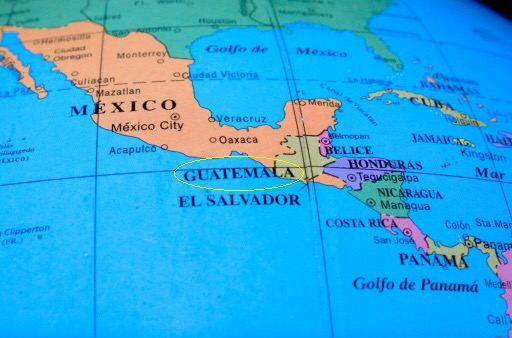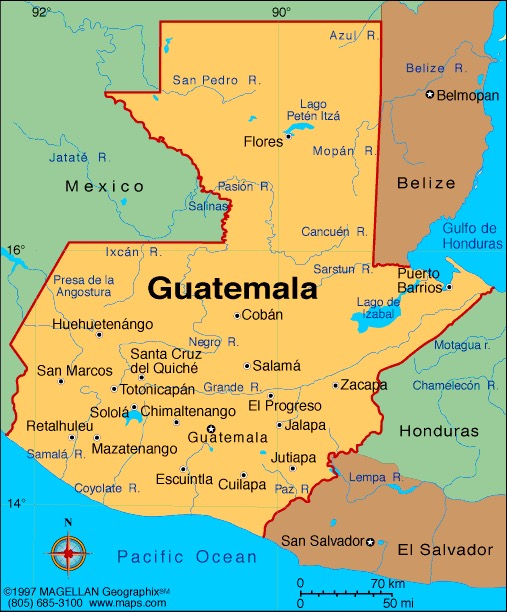Capital: Guatemala City.
Area: 42.042 sq mi. Great Britain 80.823 sq mi.
Population: 15.8 million. Great Britain: 61.0 million.
Guatemala is proving to be a magical place. If you’re into indigenous cultures, the mountains, the markets, kicking back lakeside or exploring atmospheric pre-Columbian ruins and gorgeous colonial villagers, you’re going to be captivated. Travel here – once fraught with danger and discomfort – now appears to be characterised by ease; you can do pretty much whatever you want, and your experience will only be limited by your imagination and time – so it would seem.
Civil War During the 1960s and ‘70s, economic inequality and the developing union movement, forced previous oppression to new heights. Amnesty International estimates that 50,000 to 60,000 Guatemalans were killed during the political violence of the 1970s. In 1976 an earthquake killed about 22,000 people and left about a million homeless.
In 1982 General José Efraín Ríos Montt initiated a ‘scorched earth’ policy in Guatemala . Huge numbers of people – mainly indigenous men – from more than 400 villages were murdered in the name of anti-insurgency, stabilization and anti communism. An estimated 15,000 civilians were tortured and massacred; 100,000 refugees fled across the border to Mexico. In response, four guerrilla organizations united to form the URNG (Guatemalan National Revolutionary Unity).
The Signing of Peace Accords In 1996 Álvaro Enrique Arzú Irigoyen of the middle-right party was elected. In December he and the URNG signed peace accords ending the 36-year civil war, a war in which an estimated 200,000 Guatemalans were killed, a million were left homeless and untold thousands ‘disappeared’.
The greatest challenge to peace stems from inequities in the power structure. It’s estimated that 70% of the country’s arable land is owned by less than 3% of the population. According to a UN report, the top 20% of the population has an income 30 times greater than the bottom 20%. Or, as many Guatemalans will tell you, there are seven families who ‘own’ Guatemala.
Guatemala is now on a slow road to recovery from its civil war wounds. While this is in part due to the passing of generations who lived through the war, official recognition of some atrocities has been an important step in the recovery process. A campaign is underway to exhume clandestine cemeteries used by the military to bury ‘disappeared’ dissidents and the legal processes have at last begun, with some war criminals being brought to justice. So far the heftiest penalty to be handed down was to ex-Military Commissioner Lucas Tecún, who was sentenced to 7710 years in prison!
Facts and figures courtesy of Lonely Planet guide to Central America.


